The fight back from extinction
How hunting rights resurrected the Sinixt band
Melissa Ridgen | September 14, 2022
“Both the documentary record and cartographic record from that period demonstrate... beyond a shadow of a doubt – that Sinixt occupied this territory.”
E. Richard Hart, American historian Tweet
It was a long time coming – generations fighting for a return to their land followed by a decade-long court fight and a year of pandemic delays.
But this summer, more than 100 people from an American tribe returned to southeastern B.C. to celebrate a 2021 Supreme Court victory against the Canadian government, which gives them rights on their ancestral lands in the Slocan Valley where they were declared extinct in 1956.
The April 2021 win puts new life in their fight for recognition in this country, and potentially impacts all cross-border tribes who watched the battle for rights wind through four levels of court.
The tribe is the Sinixt (pronounced sin-eye-ixt) who, before contact, lived alongside other tribes in the West Kootenay region of southeastern B.C.
Their traditional territory spans from modern-day Revelstoke in the north to Kettle Falls in the south of what is now Washington state.
Part of their territory overlaps with the traditional territories of the Okanagan and Secwepemc peoples.
The Sinixt lived off waters fed by the Columbia River. Before they even laid eyes on settlers, were hit hard by their diseases.
They reportedly lost 80 per cent of their population to smallpox in the late 1700s.
Slowly but surely, they were squeezed off their territory as fur trading routes and posts took shape, mining and logging settlements followed, and massive dams were built along the powerful waterway.
A small number of Sinixt comprised the Arrow Lakes Band under the Indian Act. But when the last registered band member died in 1953, the Canadian government swiftly declared them extinct – despite their descendants living on and melding into neighboring First Nation communities.
Once off the books, the Sinixt’s 100 hectares of reserve land on the west shore of Arrow Lake, near the town of Burton, were given to the B.C. government.
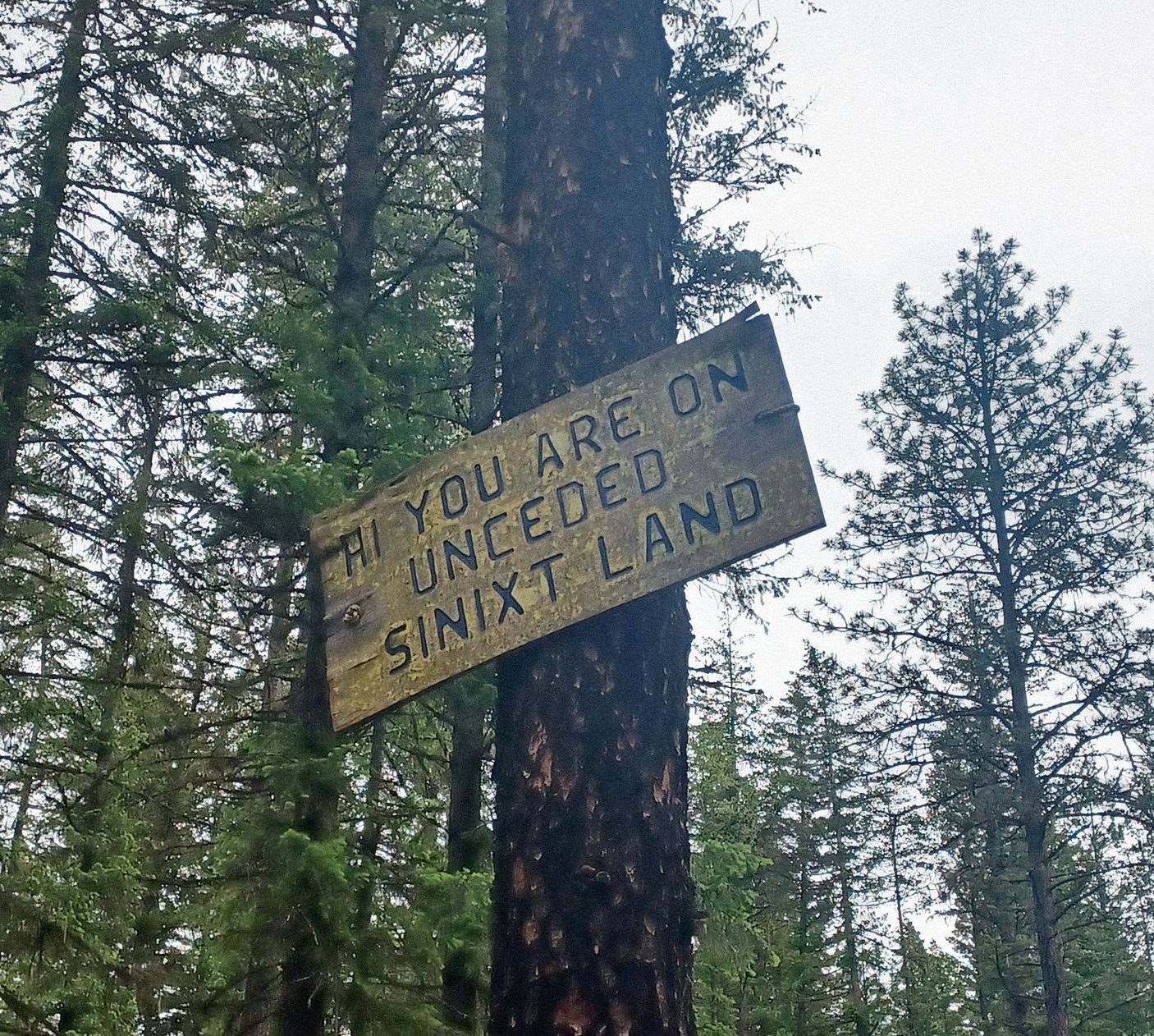
At that time, a majority of Sinixt (about 80 per cent) were already living in the southernmost part of their traditional territory in what is now Washington state. They became part of the Colville Indian Reservation – a band of 12 tribes similarly pushed off their territories by settlers and governments in the U.S.
The U.S. government bundled them onto a single chunk of land on the Columbia River three hours northwest of Spokane. Still the descendants said there has always been a hunger to reclaim access to their lands north of the Medicine Line.
It was a hunting case that helped make it happen.
In 2010, Sinixt Rick Desautel – a Fish and Wildlife officer in the U.S. – went to southeastern B.C. and shot an elk, setting in motion a fight against B.C., and eventually Canada, to assert his right to hunt on his ancestral lands here.
Despite being American citizens, the Sinixt argue their rights pre-date international borders and laws.
“The government understood that this case would change the way we look at cross-border peoples and how this territory would be managed and protected going forward,” said Mark Underhill, the lawyer for Desautel and the Sinixt.
“The government saw it as a very important case and took it all the way (to the Supreme Court of Canada).”
Eventually, in a 7-2 decision, the Supreme Court recognized the Sinixt’s inherent right to the land and water of their ancestors, regardless of the U.S.-Canada border.
There are believed to be at least 3,500 Sinixt affected by the ruling.
“Why did we win this case? Because of the most impressive piece of expert work I’ve ever seen in my entire legal career. And to be clear, it’s never been done before, at least in this country.”
Mark Underhill, the lawyer for Desautel and the Sinixt Tweet
As wild as it is for an extinct people to beat a government in its own court, the same original settlers who helped squeeze them from their land, ultimately helped them win it back.
“As a young lawyer, I thought I could win cases by constructing these wonderful legal arguments,” said Underhill. “But the truth is you win cases – certainly like this one – by having great evidence.”
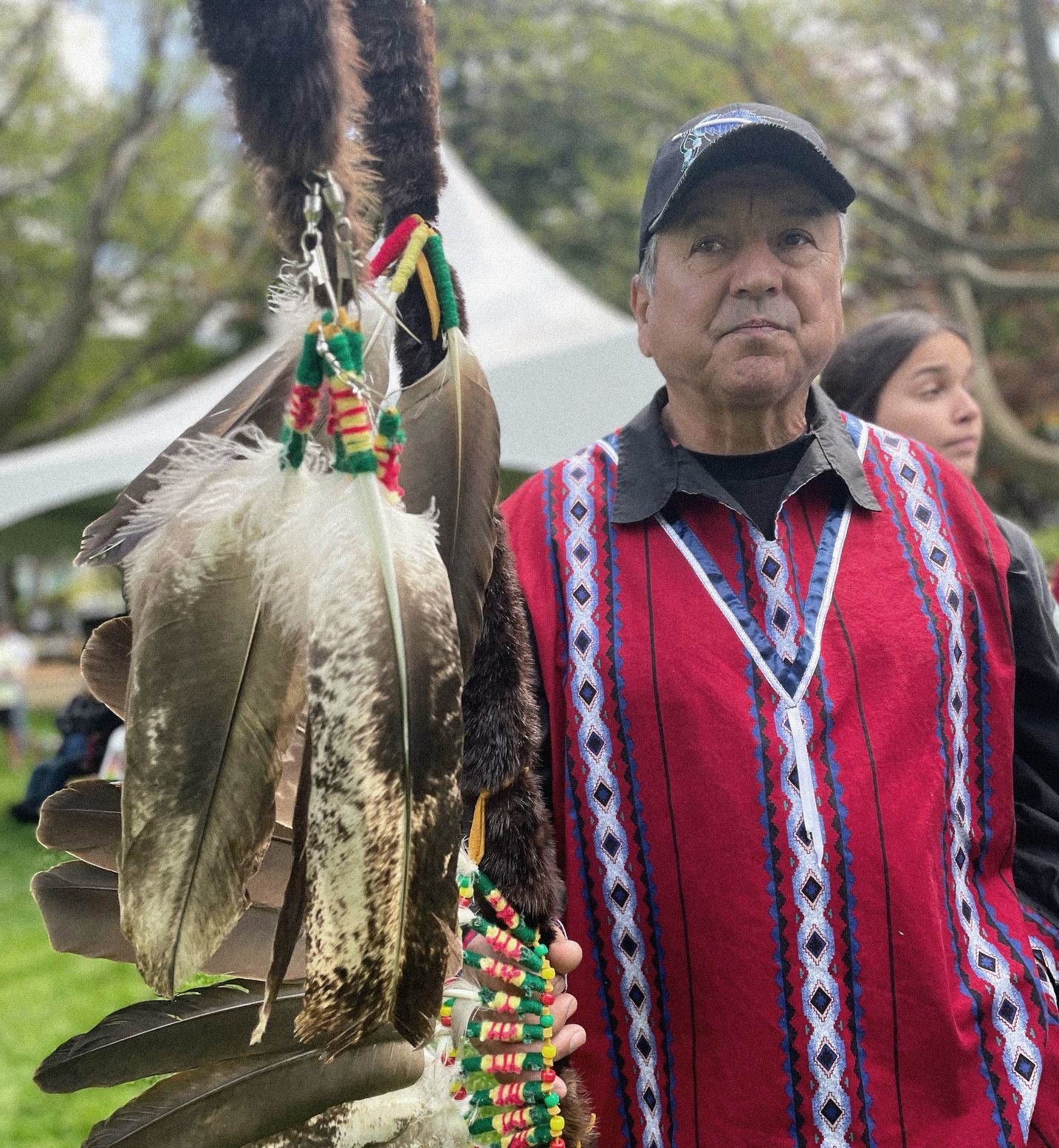
American historian E. Richard Hart was one of the star witnesses.
“Alexander Ross, who worked for a couple of fur trade companies and eventually worked for the Hudson’s Bay Co., it was in his interests and the company’s interest, to determine which tribes lived in which areas, which tribes were better hunters,” Hart explained.
“Fortunately, both the missionaries and the early trappers were literate. People knew how to write and kept good written records. So, we have a lot of evidence that we can look at when we’re looking at that period 1811 to 1846.”
Hart and another expert witness, Andrea Laforet, an anthropologist with the Canadian Museum of History, methodically laid out maps and missionary logs in court.
“Both the documentary record and cartographic record from that period demonstrate, I think – beyond a shadow of a doubt – that Sinixt occupied this territory,” Hart said.
“Why did we win this case?” added Underhill. “Because of the most impressive piece of expert work I’ve ever seen in my entire legal career. And to be clear, it’s never been done before, at least in this country.”
It’s not lost on Roger Finley, an elected Sinixt representative with the Colville Confederated Tribe, that settler evidence had to prove the oral history of what his people have always known in order to win the case.
“When I guess you have to fight these things out in a colonized court system, you want to use the colonizers’ own (evidence) to your benefit,” Finley said during the homecoming celebration in Nelson, B.C.
“It was accurate enough to get us to where we are today.”
The celebration was the first time many had visited their ancestral lands – something Finley hopes will become part of their regular lives.
Like any good drama, the Sinixt case had its share of plot twists.
“We want to be meticulous. We want to do it right the first time.”
Roger Finley, elected Sinixt representative Tweet
Dorothy Kennedy, a scholar and expert in Sinixt history, testified for the Crown that Sinixt went south “voluntarily, to enthusiastically embrace farming” and therefore had no rights to their land in Canada.
“We were able to muster a cross-examination of (Kennedy) that ripped that to pieces,” said Underhill. “But it was a significant hurdle that we faced.”
The celebration was cheerily attended by curious locals, provincial dignitaries and leaders from other tribes in the region, including Osoyoos Chief Clarence Louie – who all welcomed the Sinixt back with open arms.
Yet Finley said the court case didn’t resolve anything. It just set the stage for a new beginning for Sinixt to return to the area and re-establish themselves.
He said the official return needs to be handled correctly, so future generations don’t have to fight for their territory in the future.
“We don’t want to jump right into that and just have it be something you change in five months or five years or 50 years,” he said, “or look back and say we should have done this or that.
“We want to be meticulous. We want to do it right the first time. So all parties involved are happy with it.”
Part of the return means reuniting people from wherever they were scattered. And having Canada essentially admit they aren’t extinct.
Still, it appears beating the government in its own court wasn’t enough.
Indigenous Services Canada (ISC) said for Canada to recognize the Sinixt as an official band they need to apply for recognition.
“Should the primary interest of the Sinixt Peoples be the recognition of the group as a band under the Indian Act, the group must submit an application that meets the requirements of the department’s New Band/Band Amalgamation policy,” ISC said in a statement emailed to APTN News.
“At this time, there is no application with the department for the recognition of the Sinixt Peoples.”
Another plot twist?
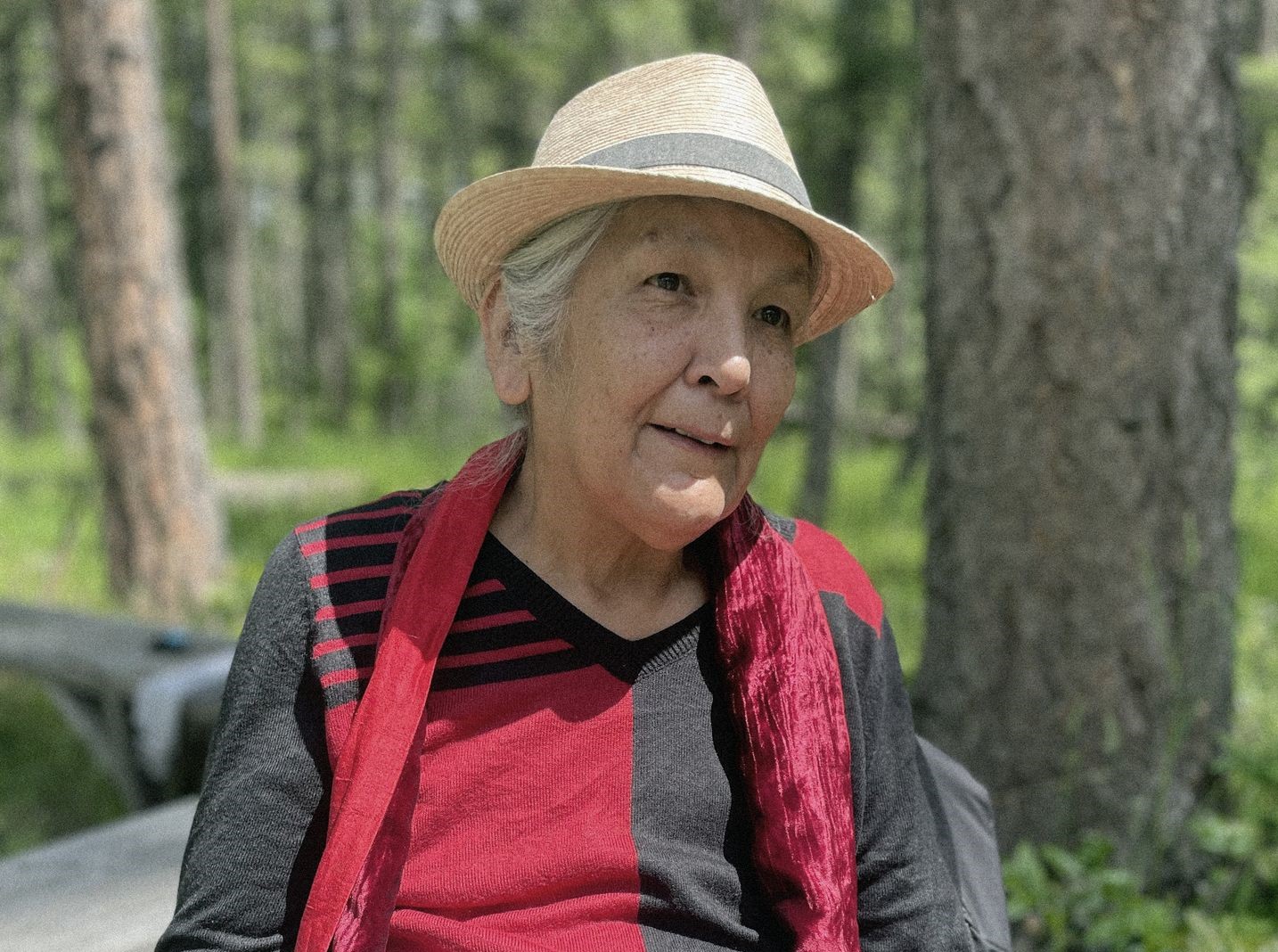
There was no welcome mat placed out from some of the small numbers of Sinixt who have been in the Slocan Valley, 700 km east of Vancouver, all along.
A group called Autonomous Sinixt and their non-Indigenous supporters in the Blood Life Collective worry the hunting rights victory is being used to get a foot in the door of the territory to further exploit natural resources.
Sinixt Marilyn James didn’t attend the homecoming in favour of staying at nearby Vallican – a small off-the-grid parcel of Crown land on the west side of the Slocan River, 40 km west of Nelson.
“This site has been an occupation site for the Sinixt for over three decades,” she said.
The old Sinixt village was discovered by crews building a highway in 1987, which prompted some Sinixt to descend on the area to ensure the remains of their ancestors were properly and respectfully moved to a spot they could protect.
It’s where James now lives, in one of two small cabins, along with a pit house.
“The government of Canada or any tribal government does not carry authority, power or right to terminate my cultural responsibilities to my ancestors"
Marilyn James, Sinixt Tweet
The B.C. government signed an agreement with her in 2020 to take care of what is considered to be an archeological site.
James said 64 ancestors have been repatriated here, in accordance with very specific Sinixt burial traditions.
James questions the motives of her American relatives, while they deny she is even one of them.
“Basically, what they’ve done is set up federally recognized tribal groups as corporate constructs,” she alleged. “They’re just corporations with corporate interests.”
James is aware of the long list of corporate sponsors who paid for the event and the travel of 100-plus Colville Sinixt.
While she herself is a member of Colville, the tribe rejects her as Sinixt, insisting her membership is as an Okanagan and they want her out of the Vallican site.
“Marilyn James is a registered member of the Kamloops Indian Band and an Okanagan member of the Colville Confederated Tribe,” said a statement from the tribe.
“At no time have Sinixt appointed her as a matriarch or any other kind of representative for our people, nor have we given her responsibility to care for our ancestors at Vallican.”
As tensions within the tribe heated up, the B.C. government ended its agreement with James to care for Vallican.
But she is still there, calling it a “re-occupation” of the site she used to protect.
“The government of Canada or any tribal government does not carry authority, power or right to terminate my cultural responsibilities to my ancestors that I was actively involved in repatriating and reburying at the Vallican site,” she told APTN in a follow-up statement.
James said she won’t leave and shrugs off what the tribal office said about her ancestry, while claiming she is blood related to some of her Sinixt detractors.
Results of colonialism
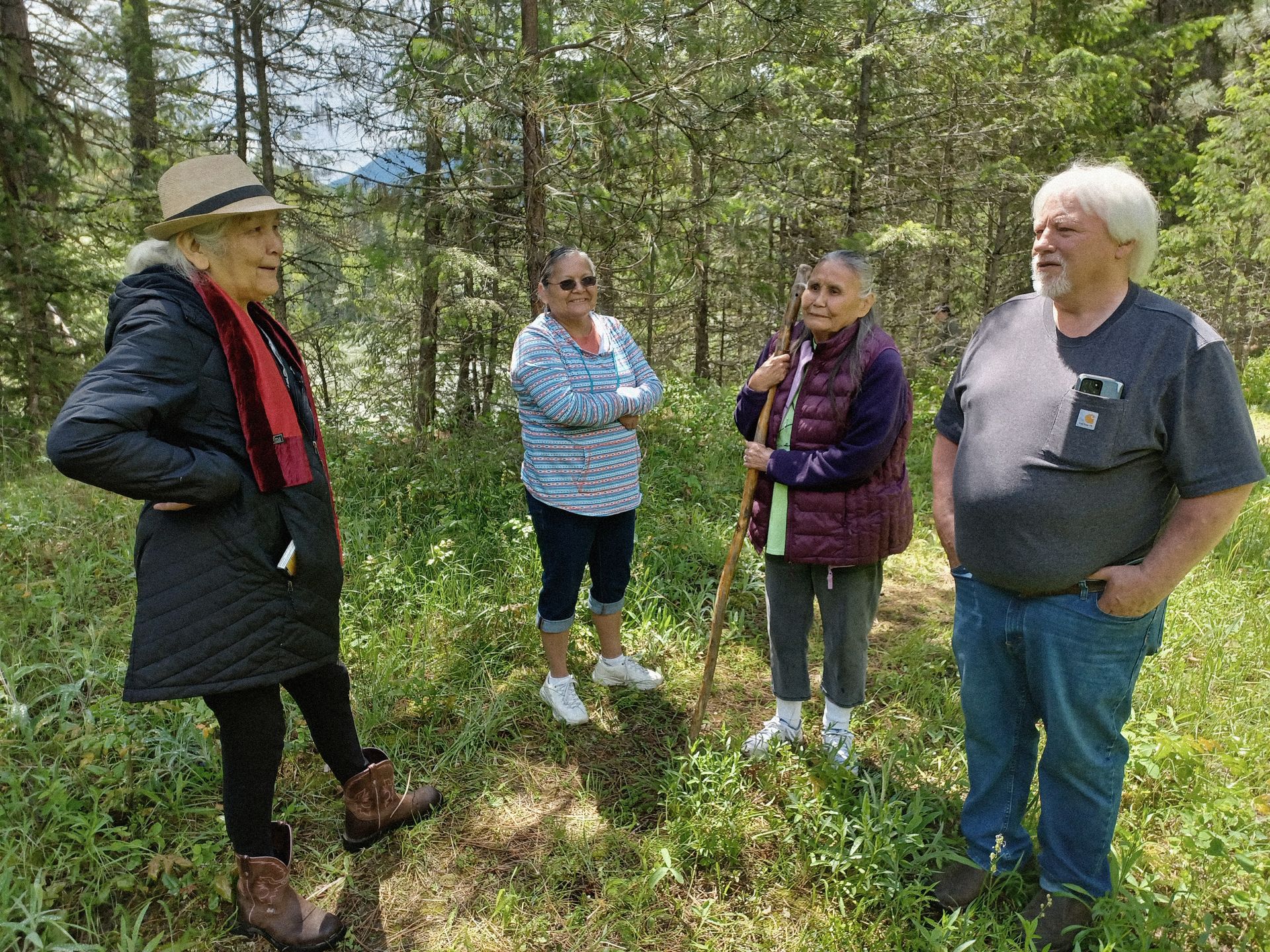
More bad blood between James and American Sinixt erupted in a fight over old woven baskets.
In the Rossland Museum outside Nelson, there are baskets James said were handed down by her Sinixt family. But the U.S. Sinixt made a production at the homecoming of showcasing a basket they say is the only Sinixt one remaining.
The rift caused by colonialism was further apparent when, after the homecoming, several Americans showed up at Vallican to pay their respects to the ancestors James watches over, including Rick Desautels and his family members.
Few words were spoken, but when a second U.S. family came while APTN was onsite, James was welcoming and gave them a tour of the repatriated burial sites.
Underhill said the court victory isn’t just about hunting rights – he said it will help all Sinixt re-establish themselves in the region and in the eyes of governments.
“There are Sinixt people on both sides of the border and this decision benefits everybody and enshrines everybody,” he said.
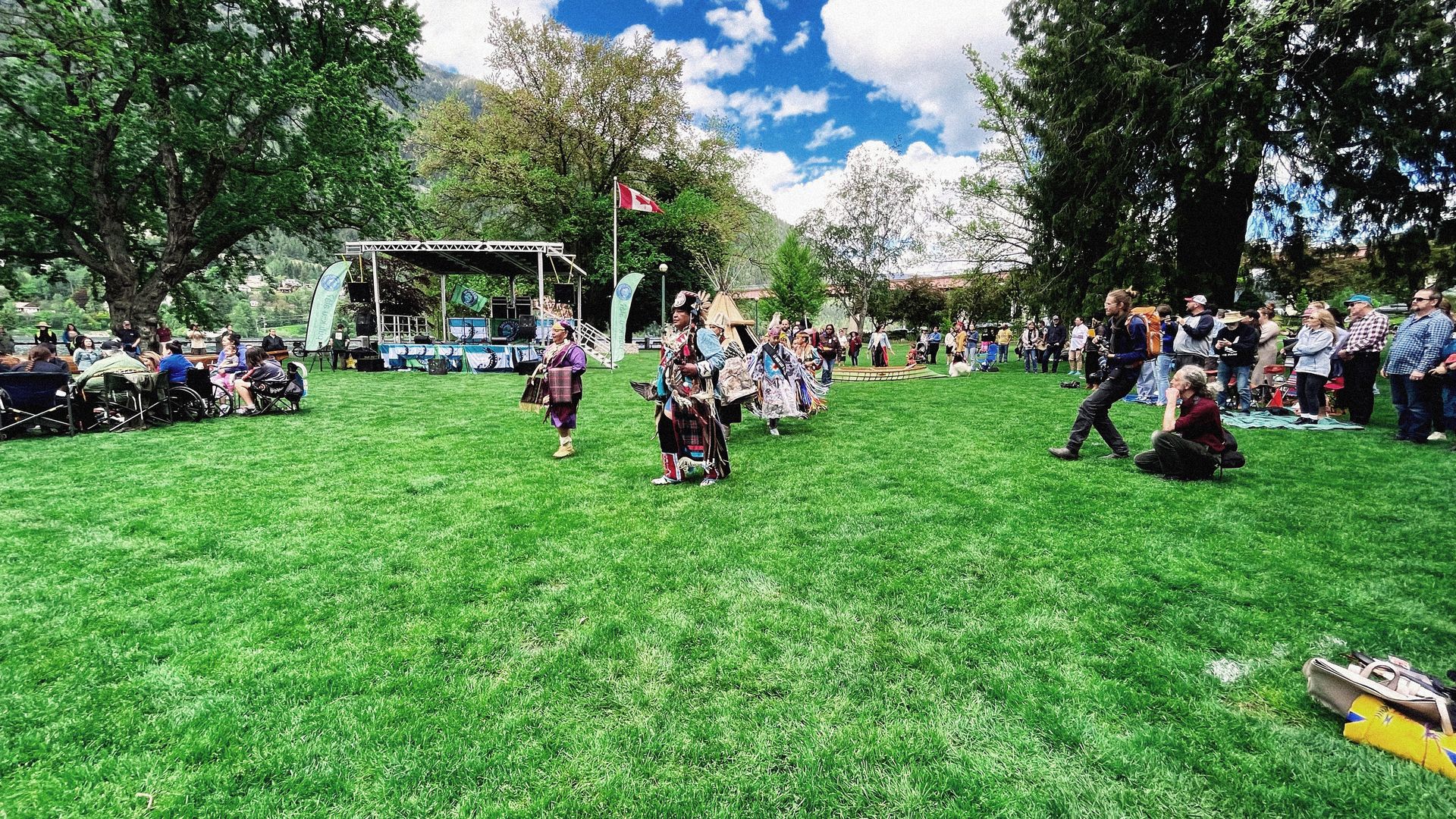
Now, Canada and B.C. have to figure out what this decision means and make space for Sinixt as people of the region and establish a new relationship with them while not stepping on the toes of other bands with land rights in the Kootenays.
Finley said in this time of truth and reconciliation, governments need to move forward meaningfully and respectfully to right historical wrongs, and work with the new representative body of Sinixt that will eventually take shape.
“They don’t want to have hard coversations,” said Finley, “but all of a sudden…we were extinct and we’re back.
“How do you let everyone else know that, and that’s a tough thing. And I don’t know how (they’ll do that).”
two-part series
American citizens who won a decade-long court fight for rights on their ancestral lands in southeastern British Columbia finally got to come home this summer.
Sinixt, who’d been forced by colonization into Washington state returned to Nelson B.C., to celebrate 2021 landmark supreme court decision.
But re-establishing themselves in this country won’t be without hurdles.
Here’s our two-part perspectives series: The Sinixt – Back From Extinction
Sinixt Nation:
A Story of Extinction and Baskets
Marilyn James has fought for recognition for her people for three decades, facing opposition every step of the way.
The feds consider her people extinct. BC courts ruled she has no standing. And now her cousins south of the border have a supreme court victory granting hunting rights.
Members have frozen her out. Denouncing her claims as false.
APTN Investigates explores her story – one of genocide, identity and baskets.
